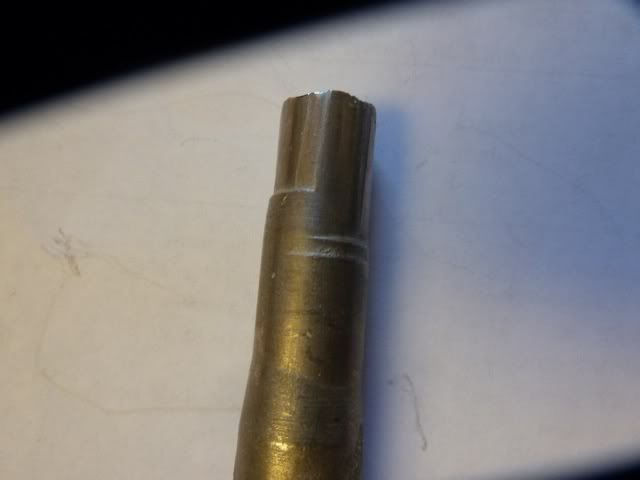Don said:
Not trying to dis anyone or say that the advice given is wrong but we need to deal with the OP's brand of gun and not make him feel silly about buying a Pietta instead of some other more expensive brand. Lets start simple, move closer to the target with the same load and see what happens. If accuracy is still terrible play with powder load size, ball size, wad versus no wads etc. Rule out the simple things first then look at the possible problems with the gun that others have pointed out. I'll bet a dozen donuts that its something simple that can be fixed without spending money on a gunsmith. Again, not trying to say anyone here is full of hooey just trying to get to the bottom of the OP's problem in a logical way so he doesn't get discouraged thinking he has a POS revolver or needs to get it worked on by a gunsmith.
Don
I simply stated a fact. I don't know what the Pietta he has is like or even what it sold for.
But experience has taught me some hard lessons in this regard.
Based on EXPERIENCE (I used to do quite a bit of work on Colt SAA and clones and almost all of it crosses directly to C&B revolvers which I worked on less frequently) I answered the question and stated what I THOUGHT might be causing the problem. Since I can't see the gun from here I used the shotgun approach starting with loading advice.
If its impossible to give VALID information without people getting their back up the site is USELESS.
If he expects decent accuracy, and a good Colt design C&B is ACCURATE by any standard short of a dedicated target pistol, there are things that need to be explored and perhaps corrected.
He needs to know the possible pitfalls and fixes.
Is the hammer excessively loose on the screw for example, if so its possible to put a low rear sight on the barrel to give a consistent rear sight.
If the forcing cone is bad, and you might get a high end gun that could use work in this area like a new made S&W, Brownell's offers the forcing cone cutter kits for good reason, its a fairly easy and almost magical fix sometimes.
So its ENTIRELY possible that the revolver will give excellent accuracy by correcting minor faults that might be found in any production revolver.
But frankly in firearms you almost ALWAYS get what you pay for. In Italy they make guns to a price. You tell them you want to pay 50 bucks for the gun you get a 50 buck gun. Doing the same gun RIGHT might mean its cost to importer is double this or more. Back when I had better contacts I was told that there were at least 3 grades of C&B revolvers being imported, sometimes all with the same makers name.
The bottom line here is I volunteered the information not knowing anything aside from the shooter wanted to know why the revolver did not seem to shoot well.
So I gave loading instructions that would produce 6" groups from my "Western Arms" 1860 Army at 80 yards. Deviating sigificantly from that loading process would seriously degrade the accuracy.
So proper loading is an issue to be considered. If care in loading cures the problem then the other things are NOT AN ISSUE.
But they can ALL be factors that may be relatively easy to fix or not worth the effort.
Its impossible for people to make informed decisions without SOME modicum of information.
I don't believe there is much fear of the brass frame, but cylinder pins DO get loose sometimes or they come that way. I had a 1st Gen Colt that was really a disappointment. I got it in a trade and never did get it like I wanted it and eventually sold it. It happens. But it happens far less often with the upper end guns than with the lower end guns. This is just a fact.
But the mantra of this site is far too often that the cheap guns are just as good as the higher priced ones. In C&B revolvers this is not the case and its not the case in the others as well.
This is an actual chamber cast from an Italian made 1876 Winchester a friend bought.
It was one of the lower end ones. Surprisingly it did not stick cases. But there was no accuracy at all.
As near as I can determine its been chambered 4 times with probably as many different reamers and at least once out of line with the bore. The last time after it was blued and the reamer only removed the bluing and cut into the steel a couple of places at opposite side and ends of the chamber.
Frankly I just don't know how they did this.
Its OBVIOUS the maker knew this barrel was bad but it arrived in the US and was sold anyway.
Oh yes the barrel was turned into the receiver slightly LESS than finger tight as well. This would have been impossible for the guy who installed the barrel to overlook, but he was likely not being paid enough to care. The only thing that kept the barrel "indexed" was the magazine tube.
So the next time one of you are looking at some bargain basement import (or made in USA) BP or other firearm remember this cautionary tale or not. Its just one of many. I happen to have photos of this one handy.
Dan





